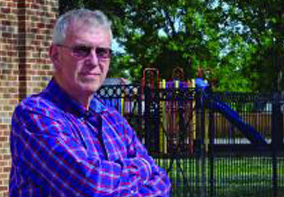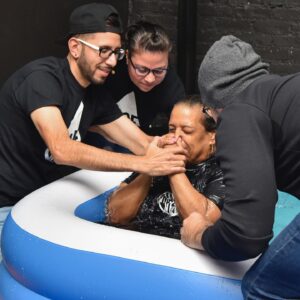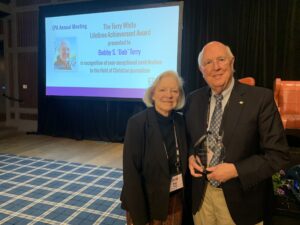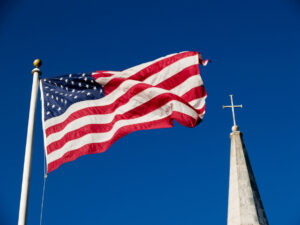
NEW ORLEANS (BP) — Gun violence in New Orleans’ quiet Gentilly neighborhood once was rare, but after four shootings rocked Gentilly Baptist Church in a year’s time, pastor Ken Taylor decided something had to change.
 That “something” turned out to be him; he began visiting crime scenes to care for hurting people, even scenes marked by the faint imprint of Voodoo.
That “something” turned out to be him; he began visiting crime scenes to care for hurting people, even scenes marked by the faint imprint of Voodoo.
Taylor’s commitment came in the wake of a church family grieving the loss of two teenage sons whose deaths occurred mere months apart and after a nearby double-murder took place while one victim’s brother played basketball in the church gym. And a man was shot in front of the church as he left the Sunday worship service to go home.
“The shootings certainly brought home to us what we knew the city has been facing for a long time,” Taylor said. “It personalized it for us more.”
As crime reports came in, Taylor, a New Orleans Baptist Theological Seminary professor of missions, found himself most often in the nearby 7th Ward where locals often delineate between the “lake side” of St. Claiborne Avenue, a main artery bisecting the region, and the more troubled “river side” where violence is more prominent.
Good has come from Taylor’s visiting crime scenes as one man began attending church and is now considering a call to ministry. And in the pulpit, Taylor said he feels a greater sense of urgency and knows he’s speaking to many “who live on the cusp of life or death.”
Though quiet has mostly returned to Gentilly, the need remains. Last fall, Taylor was called to a home he knew well to see yet again the all-too-familiar sight of the grandmother mopping up blood on the porch.
In that shooting, one woman told Taylor she thought she knew the perpetrator but was too afraid to tell. The woman believed the shooter to be the man who had murdered her own son.
“People are scared,” Taylor said.
Burdened for the city and for a way to help students connect to its need, Taylor decided to take his Urban Missions class out to prayerwalk in the troubled 7th Ward after a quadruple shooting left one man dead and three injured, including a one-year-old girl.
When Taylor and his class of seven students pulled up, they saw a makeshift memorial of teddy bears and flowers marking the house where the shootings had taken place three days earlier.
While the students walked the neighborhood in prayer, Taylor stayed at the scene and talked to family members.
One NOBTS student, Sarah Clawson, talked to several neighbors, including a group of men outside a neighborhood convenience store who were disturbed by the murder and “the baby who was shot.”
The neighbors want real change, Clawson said. “With the exception of only one person, all asked for prayer for their community.”
At the scene, the victim’s sister, the last surviving member of her immediate family, grieved publicly but eventually allowed Taylor to pray with her.
While there, Taylor said he was caught up in an emotionally-charged altercation involving the victim’s aunt and a neighbor that ended as police led the neighbor away in handcuffs. The police had arrived to monitor a Second Line — typically a march where participants dance as they follow a brass band — that was pre-arranged in the victim’s honor.
Instead, the band played and participants danced in front of the crime scene as the victim’s aunt poured pieces of candy over the memorial and another woman poured beer, a ritual that hints of Voodoo and paying homage to deceased loved ones, Taylor said.
Clawson said the non-traditional Second Line began with people having a good time, then switched to loud waling and weeping.
“There was a feeling of hopelessness,” she said. “This was all they had left of him.”
Taylor pointed to the pervasive influence in the community of the little-publicized Spiritualist Church of New Orleans, a group that researcher and author Claude F. Jacobs has described as a syncretistic mix of Catholic and Protestant orthodoxy, Pentecostalism, Voodoo and spiritualism.
“We were speechless,” Taylor said. “I could not have arranged a more fitting setting for urban missions. It was quintessential New Orleans.”
Another student, Bryan Coble, said the experience in the 7th Ward confirmed his sense of call to urban missions and has emboldened him to share the Gospel.
“Dr. Taylor genuinely cares for his students,” Coble said. “He wants us to see the real New Orleans and experience what it will take to heal the brokenness of the city.”
Finding ways to address violence is a continuing process, Taylor said, noting that the church needs to be at the heart of the solution.
“While there is a lot of bleakness and fear, I see God working in individual lives,” Taylor said. “It is through Jesus Christ that lives are changed, and
it’s only through changed lives that we can deal with this.”















